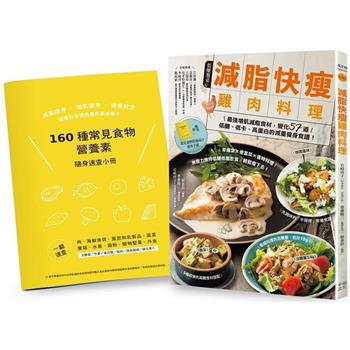Updated with the latest clinical advances, Rowland and Tozer’s Clinical Pharmacokinetics and Pharmacodynamics, Fifth Edition , explains the relationship between drug administration and drug response, taking a conceptual approach that emphasizes clinical application rather than science and mathematics. Bringing a real-life perspective to the topic, the book simplifies concepts and gives readers the knowledge they need to better evaluate drug applications.
•Key updates reflect advances in PK/PD as related to clinical decision making and drug research and development.
•An emphasis on the clinical relevance of drugs makes the book especially applicable to pharmacy students preparing for a career in clinical practice.
•Hundreds of graphs and tables provide visual representations of key pharmacokinetic/pharmacodynamic principles and effects.
•More than 200 carefully written study questions, with answers and in-depth explanations, help readers enhance their conceptual understanding and learn and retain key information.
•New and updated examples connect chapter content to real-world settings.
•Interactive online simulations give students practice using different pharmacokinetic/pharmacodynamic models and parameters.
•eBook available for purchase. Fast, smart, and convenient, today’s eBooks can transform learning. These interactive, fully searchable tools offer 24/7 access on multiple devices, the ability to highlight and share notes, and more
| FindBook |
|
有 1 項符合
Hartmut Derendorf的圖書 |
 |
$ 2660 | Rowland and Tozer’s Clinical Pharmacokinetics and Pharmacodynamics: Concept and Applications
作者:Hartmut Derendorf、Stephan Schmidt 出版社:九州 出版日期:2019-08-24 語言:英文 規格:精裝 / 939頁 / 18.5 x 25.7 x 13.15 cm / 普通級 / 單色印刷 / 5版  看圖書介紹 看圖書介紹
|
|
|
圖書介紹 - 資料來源:博客來 評分:
圖書名稱:Rowland and Tozer’s Clinical Pharmacokinetics and Pharmacodynamics: Concept and Applications
內容簡介
作者介紹
作者簡介
Hartmut Derendorf Ph.D.
Distinguished Professor Emeritus
Department of Pharmaceutics
College of Pharmacy
University of Florida
Gainesville, Florida
Stephan Schmidt Ph.D
Certara Professor
Associate Professor
Associate Director, Center for Pharmacometrics and Systems Pharmacology
Department of Pharmaceutics
College of Pharmacy
University of Florida
Orlando, Florida
Hartmut Derendorf Ph.D.
Distinguished Professor Emeritus
Department of Pharmaceutics
College of Pharmacy
University of Florida
Gainesville, Florida
Stephan Schmidt Ph.D
Certara Professor
Associate Professor
Associate Director, Center for Pharmacometrics and Systems Pharmacology
Department of Pharmaceutics
College of Pharmacy
University of Florida
Orlando, Florida
目錄
Section 1 Basic Considerations
Chapter 1 Therapeutic Relevance
Chapter 2 Fundamental Concepts and Terminology
Section 2 Exposure and Response after a Single Dose
Chapter 3 Kinetics Following an Intravenous Bolus Dose
Chapter 4 Membranes and Distribution
Chapter 5 Elimination
Chapter 6 Kinetics Following an Extravascular Dose
Chapter 7 Absorption
Chapter 8 Response
Section 3 Therapeutic Regimens
Chapter 9 Therapeutic Window
Chapter 10 Constant-Rate Input
Chapter 11 Multiple-Dosage Regimens
Section 4 Individualization
Chapter 12 Variability
Chapter 13 Genetics
Chapter 14 Age, Weight, and Gender
Chapter 15 Disease
Chapter 16 Nonlinearities
Chapter 17 Drug Interactions
Chapter 18 Initiating and Managing Therapy
Section 5 Supplement Topics
Chapter 19 Distribution Kinetics
Chapter 20 Metabolites and Drug Response
Chapter 21 Protein Drugs
Chapter 22 Prediction and Refinement of Human Kinetics from In Vitro, Preclinical, and Early Clinical Data
Appendices
Appendix A
Appendix B
Appendix C
Appendix D
Appendix E
Appendix F
Appendix G
Appendix H
Appendix I
Appendix J
Appendix K
Index
Chapter 1 Therapeutic Relevance
Chapter 2 Fundamental Concepts and Terminology
Section 2 Exposure and Response after a Single Dose
Chapter 3 Kinetics Following an Intravenous Bolus Dose
Chapter 4 Membranes and Distribution
Chapter 5 Elimination
Chapter 6 Kinetics Following an Extravascular Dose
Chapter 7 Absorption
Chapter 8 Response
Section 3 Therapeutic Regimens
Chapter 9 Therapeutic Window
Chapter 10 Constant-Rate Input
Chapter 11 Multiple-Dosage Regimens
Section 4 Individualization
Chapter 12 Variability
Chapter 13 Genetics
Chapter 14 Age, Weight, and Gender
Chapter 15 Disease
Chapter 16 Nonlinearities
Chapter 17 Drug Interactions
Chapter 18 Initiating and Managing Therapy
Section 5 Supplement Topics
Chapter 19 Distribution Kinetics
Chapter 20 Metabolites and Drug Response
Chapter 21 Protein Drugs
Chapter 22 Prediction and Refinement of Human Kinetics from In Vitro, Preclinical, and Early Clinical Data
Appendices
Appendix A
Appendix B
Appendix C
Appendix D
Appendix E
Appendix F
Appendix G
Appendix H
Appendix I
Appendix J
Appendix K
Index
序
序
Over the last 35 years and four published editions, Clinical Pharmacokinetics and Pharmacodynamics: Concept and Applications, by Malcolm Rowland and Thomas N. Tozer, became the classic introduction to the fields of drug development and drug therapy optimization. This didactic masterpiece taught concepts of dose optimization in an exciting and stimulating way and encouraged further study of the field. It conveyed the joy that comes from mastering quantitative integration tools that can apply information from a wide variety of drug studies to make individual recommendations on choosing the best dosing regimen for individual patients.
It was a great honor and pleasure for us when the original authors asked us to take over the authorship for this and future editions. We are humbled to stand on the shoulders of these giants and we greatly appreciate their confidence in us. We have endeavored to keep the clear didactic structure of the previous editions while adding new developments in the field that is now called Pharmacometrics. One of the most significant changes during the years since the first edition of this book is the dramatic progress in computational technology that now allows sophisticated mathematical analysis of relatively complex scenarios. However, the goal has not changed: How can we best decide which dose, which dosing regimen, and which dosage form should be used for a patient which will have the highest probability of therapeutic success without dosing harm? This fifth edition was guided at each stag by this goal.
Over the last 35 years and four published editions, Clinical Pharmacokinetics and Pharmacodynamics: Concept and Applications, by Malcolm Rowland and Thomas N. Tozer, became the classic introduction to the fields of drug development and drug therapy optimization. This didactic masterpiece taught concepts of dose optimization in an exciting and stimulating way and encouraged further study of the field. It conveyed the joy that comes from mastering quantitative integration tools that can apply information from a wide variety of drug studies to make individual recommendations on choosing the best dosing regimen for individual patients.
It was a great honor and pleasure for us when the original authors asked us to take over the authorship for this and future editions. We are humbled to stand on the shoulders of these giants and we greatly appreciate their confidence in us. We have endeavored to keep the clear didactic structure of the previous editions while adding new developments in the field that is now called Pharmacometrics. One of the most significant changes during the years since the first edition of this book is the dramatic progress in computational technology that now allows sophisticated mathematical analysis of relatively complex scenarios. However, the goal has not changed: How can we best decide which dose, which dosing regimen, and which dosage form should be used for a patient which will have the highest probability of therapeutic success without dosing harm? This fifth edition was guided at each stag by this goal.
|











